Even if you’ve never owned a business, you probably intuitively know that collecting constructive customer feedback is a valuable activity. As a result, you can better solve your customer pain points, refine your offer, and net more revenue.
And, in theory, that sounds amazing. In practice, you can ask many different questions in many different situations that you might find yourself in an unfamiliar position. You have feedback, but you need to figure out what to do with it.
If this happened to you before (and if you want to prevent it from happening), you need to practice collecting actionable feedback. The good news is your customers love giving feedback as much as you love receiving it.
Today, we’ll show you different ways to start that feedback conversation and get your customers to provide insights you can learn from and implement.

What is actionable feedback?
Actionable feedback is any type of constructive feedback you collect from your customers that you can learn from and act on immediately. It is specific, measurable, and tangible and produces outcomes you can use to improve your business.
Such feedback provides specific insights rather than generalizations such as “love your app!”. It can be both positive and negative. Actionable negative feedback is probably even more useful for a business than unactionable feedback.
Actionable feedback not only tells you what the customers (don’t) like but also goes into detail to explain what your product is (not) delivering and the ways it is not meeting the customers’ expectations.
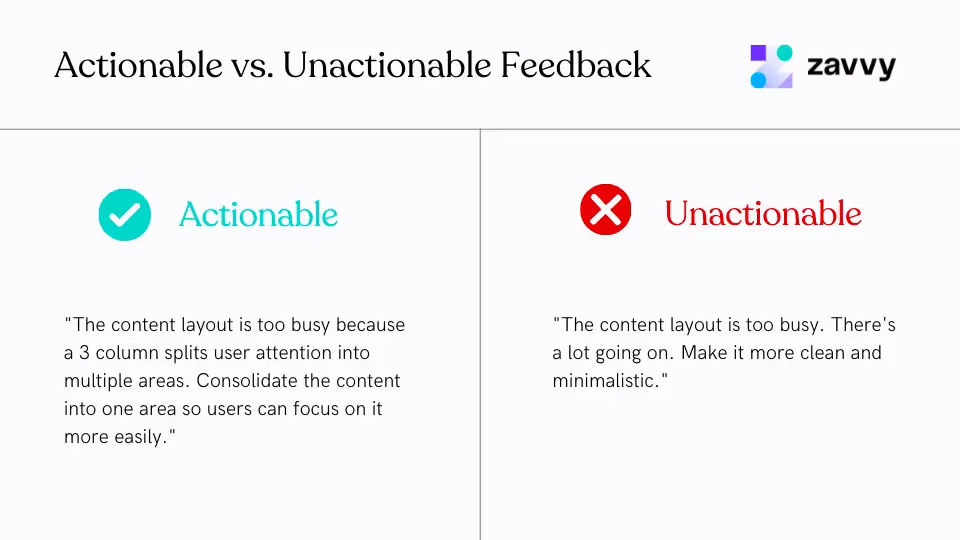
You want to be collecting the first type of constructive feedback. Unactionable feedback, however, is vague and unspecific. It does not guide you in improving your customer experience.
How to collect actionable feedback
Getting any voluntary negative or positive feedback from your customers is more than welcome. However, you can and should do whatever it takes to ensure that the feedback you get is actionable.
Ask specific questions
When asking customers to describe their overall experience with your product in their own words, don’t be surprised that the answers you get are far from actionable. Instead, try these:
- How likely are you to recommend us to your friend or someone you know? (NPS score question)
- How satisfied are you with the overall product and customer experience? (CSAT score question)
- What specific feature in our product do you find the most valuable?
- What made you decide on our product when weighing your options against the competition?
- What feature in our product would you remove? Why?
This is not an end-all list of questions but it should be enough to get you thinking in the right direction. Ask specific questions to get specific, usable feedback and focus on your long-term goals.
Ask the right questions at the right time
When a customer completes their purchase, it’s a great time to ask about their shopping experience, e.g. by using a survey. You won’t get an opportunity to ask this question again and if you do ask it anyway, they might not remember that interaction.
When you collect feedback, make sure to map out your customer touchpoints. You can only ask a question about a certain touchpoint once, so use it well.
Segment your customers
Not everyone should get the same set of questions. After all, a customer that has been with you for 3 years and spent thousands and another that joined last month will have different insights when providing effective feedback.
Make good use of CRMs, customer experience software, and survey tools, and segment your audience based on different criteria:
- how long they’ve been with you
- their customer lifetime value
- the type of products they buy
- their industry
- company size, location
- and much more, depending on the data points you have available
If you segment your customers, not only do you have a chance to ask more relevant questions to each audience set, but the answers you get will also be more valuable.
Collect qualitative and quantitative feedback
Great, actionable feedback comes in all shapes and sizes. Depending on what you’re trying to find out and what tools you’re using, there are two main feedback types.
Qualitative is the more descriptive type of useful feedback that explains the “why” behind customers’ thoughts, such as customer interviews, testimonials, and online reviews This feedback is more detailed and it is an amazing way to get deep insights into what your customers think.
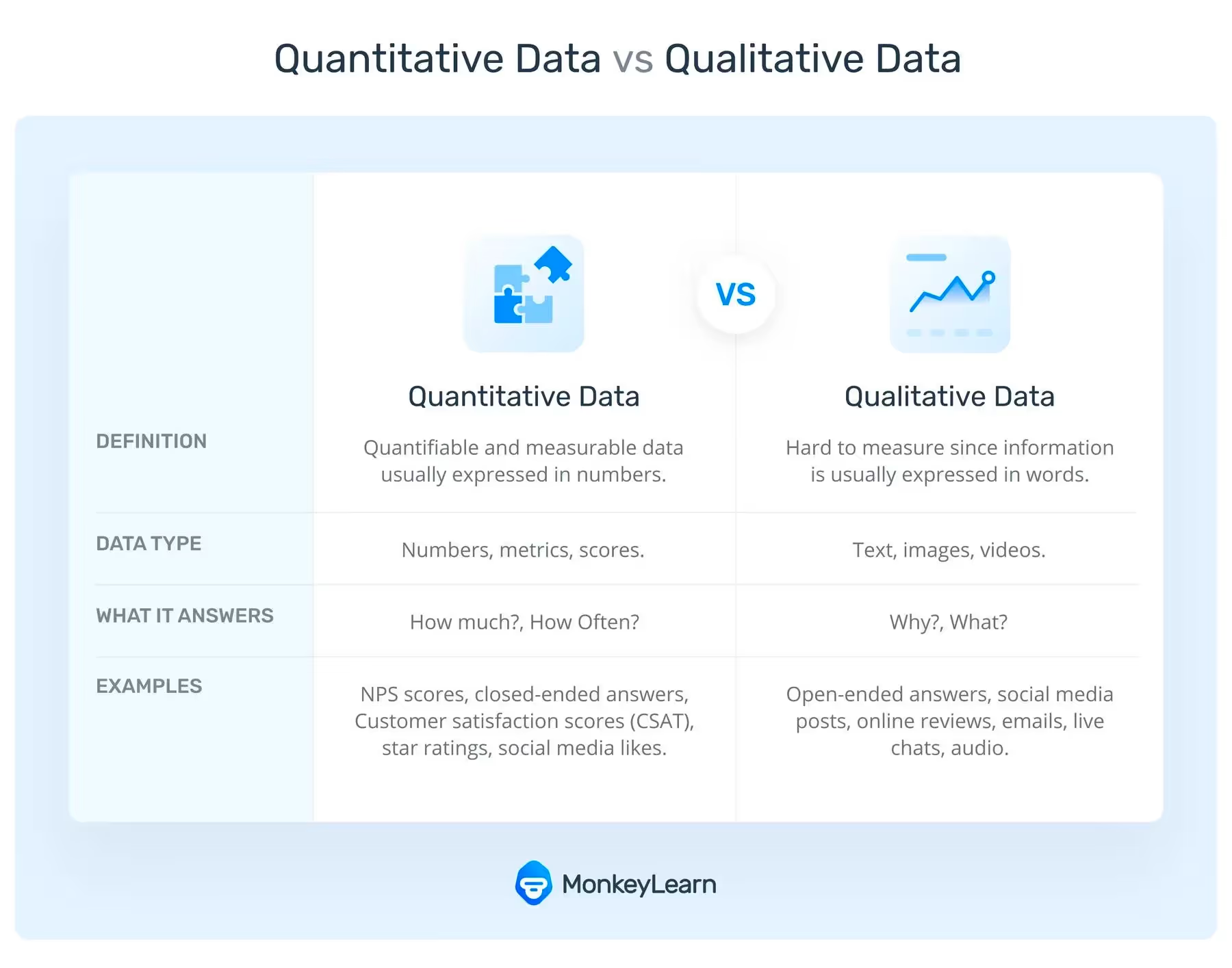
The problem with qualitative feedback is that it is difficult to measure. If a customer gives you an opinion on your customer service in an interview, there’s no way to put a number on their thoughts or rate the urgency of solving their problem.
Quantitative feedback comes in just about here. This is measurable feedback, such as an NPS score, a CSAT score, a CES score, or something similar. It gives you a specific value for a piece of customer feedback. This makes it easy to track that feedback item over time, measure progress, and compare it against industry standards.
To get actionable feedback, you should ideally gather both types of customer feedback, qualitative and quantitative. That way, you can get both the story behind your customers’ opinions and the quantitative data you need to make a decision.
Collect feedback along the customer journey
One of the biggest mistakes you can make is collecting feedback from one customer only once. Or even worse, starting to collect feedback only when you notice things are not going that well. Collecting feedback is a process and the more data you have, the better your customer experience metrics and the more you can do for the health of your business.
Some touchpoints you can use to collect customer feedback include:
- before signing up
- upon signing up
- during onboarding
- after the end of a free trial
- after your customer's “aha” moment
- after the first two weeks/one month
- After an interaction with customer support or sales
- after trying out a new feature
- after a customer churns
The more you wait after an interaction, the higher the chances of the customer forgetting what they wanted to say when providing effective feedback. With a good mix of CRM and a feedback tool like Survicate, you can create a custom workflow for each of these situations.
For example, sending an NPS survey immediately after someone gets off the phone with a customer support rep is a superb way to capture feedback that you can act on immediately.
Formulate your questions according to the insights you need
So, you want to analyze what your customers think about your content and capture some actionable feedback to make improvements. You may wonder what kind of questions to ask and which format to use. Luckily, Survicate has a solution to this problem, so you no longer have to worry about unactionable feedback.
You can grab a content preferences survey template that comes pre-loaded with the right questions. Or, for a slightly different twist, a content rating survey template that will give you quantitive feedback you can use immediately.
Not knowing what to ask is perfectly fine and we have your back again. Survicate has more than 100 different survey templates made for different situations and platforms. And once you combine these templates with some of our integrations, you have lots of ways to collect actionable feedback.
Use a variety of response types
There are plenty of different ways to ask one question. For example, if you want to ask someone about their thoughts on your new landing page design, you can do it in several ways:
- multiple choice questions
- yes/no questions
- open-ended questions
- image answer choices
Different types of feedback require different types of responses to achieve tangible results. For example, if you already have a hypothesis that you want to prove, using yes/no or true/false answers yields better answers than an open-ended question, no matter if you’re collecting negative or positive feedback.
On the other hand, an open-ended question provides the best results if you’re looking to capture qualitative feedback and you have no idea what kind of answers you can expect.
Based on the type of feedback you want to collect, choose a different answer-question combo. And if you’re not sure whether your favorite survey tool supports this way of giving feedback, this is something that you can easily do in all surveys in Survicate.
Remember that the type of questions and responses you choose may have profound impacts on the results you get. As we’ve written before, open-ended questions may cause some issues as:
- they take more time to complete
- they have a negative impact on the survey response rate
- they are harder to analyze compared to some other survey/question formats
As a result, even if you desperately need to collect qualitative feedback, it might be better to use some other question format.
Use a multichannel approach
Your customers don't use just one channel to get in touch with your business. In fact, there are a number of touchpoints, including:
- your website
- social media
- live chat
- phone calls
In order to get the most actionable feedback, you have to collect useful feedback across different touchpoints. Needless to say, you’re not going to ask the same question on two different channels.
For example, short, multiple-choice surveys and polls work well for live chat feedback collection (such as Intercom), while emails are better suited for collecting long-form qualitative feedback such as customer interviews.
You’ll find that you can use a single tool such as Survicate for asking different questions on different platforms. With Survicate, you can run contextual surveys on platforms such as email, live chat, mobile apps, your website, and many others.
There are plenty of benefits to using a single feedback tool across different communication platforms. Primarily, there is a huge advantage in having all of that customer feedback data pooled into one location. With Survicate, you can do precisely that and receive feedback that delivers results.
Wrapping up
Collecting feedback that makes an impact can seem like a mission impossible. With so many other activities to tackle during the day and so many customer touchpoints to choose from, many business owners are faced with choice paralysis. However, with so many great feedback tools nowadays, actionable feedback is no longer a distant dream.
Make it a reality today with Survicate. With over a hundred survey templates and functional integrations with your favorite tools, you’re just minutes away from asking your customers the questions that matter and getting tangible results. Sign up for Survicate's 10-day free trial and get access to all of the Best plan features today!








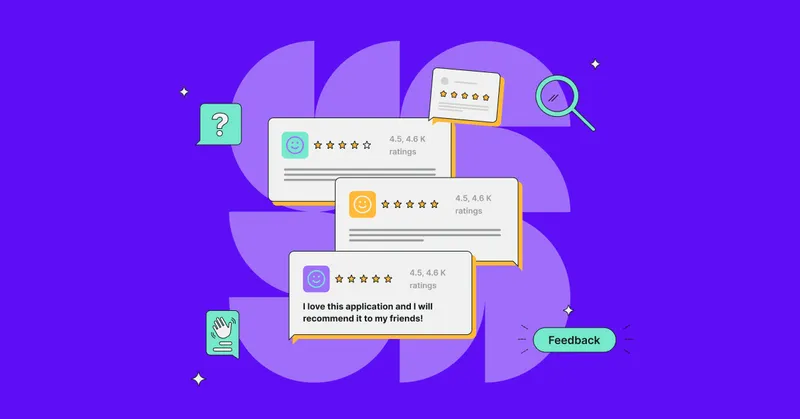
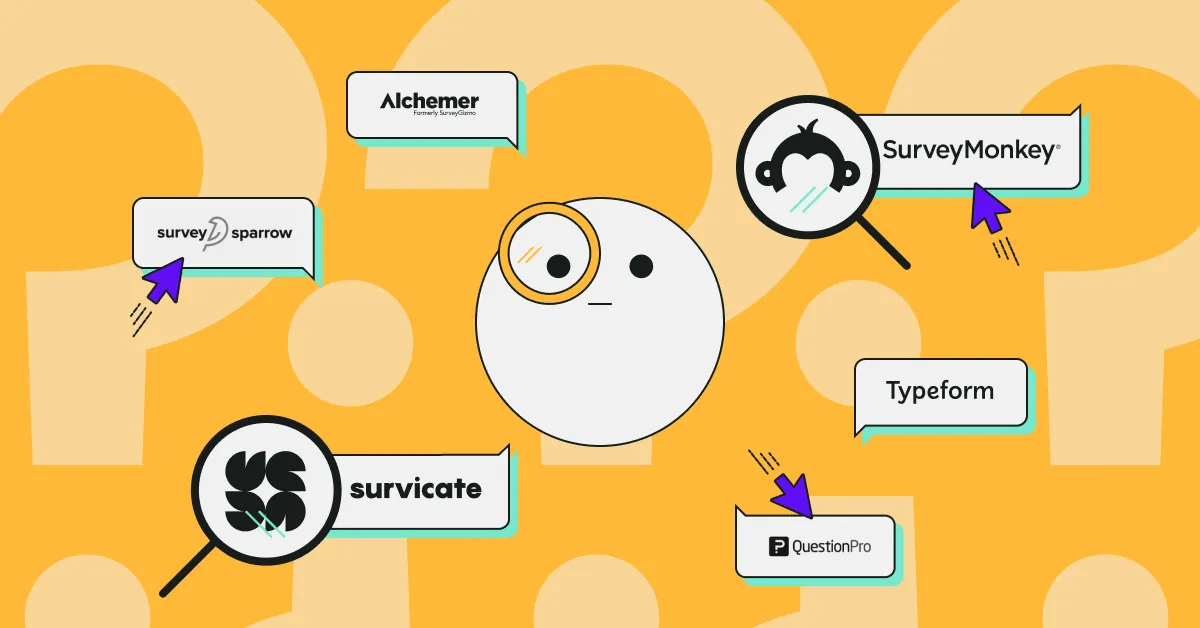
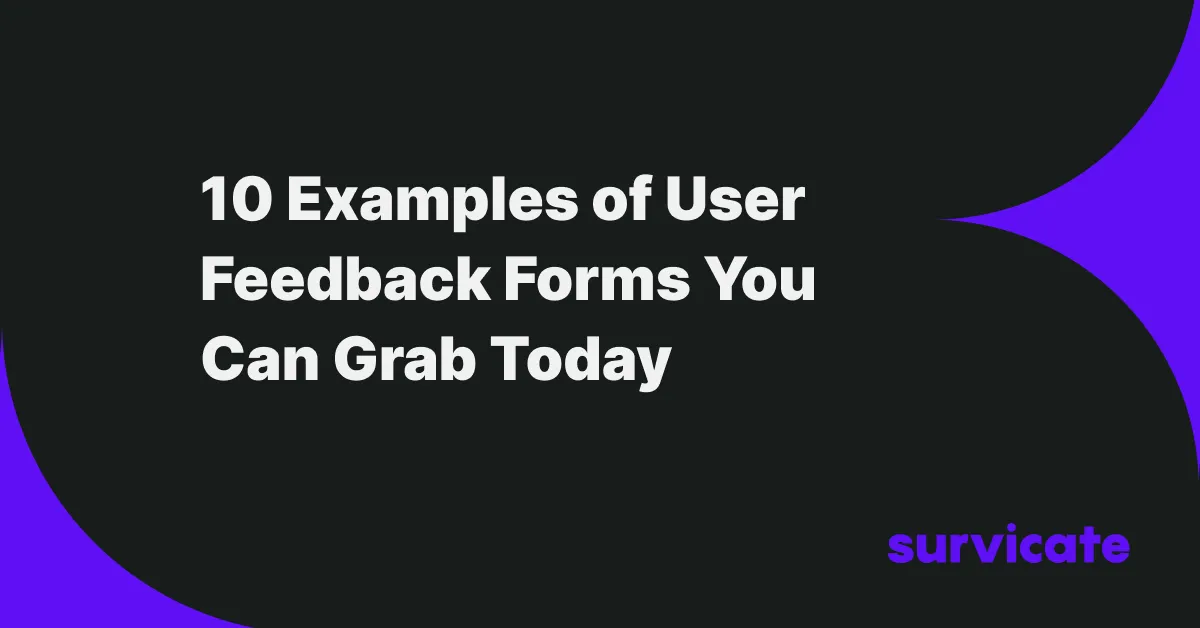
.png)

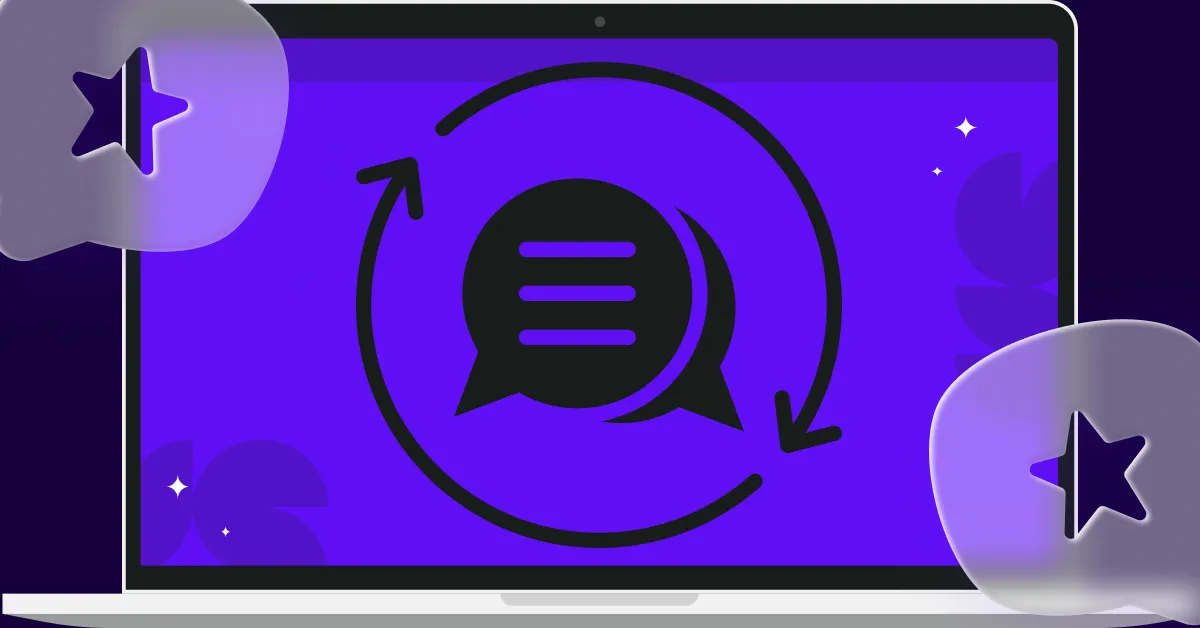

.svg)

.svg)



